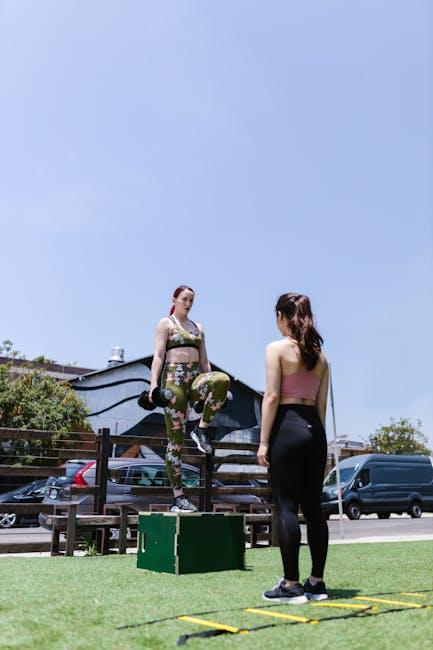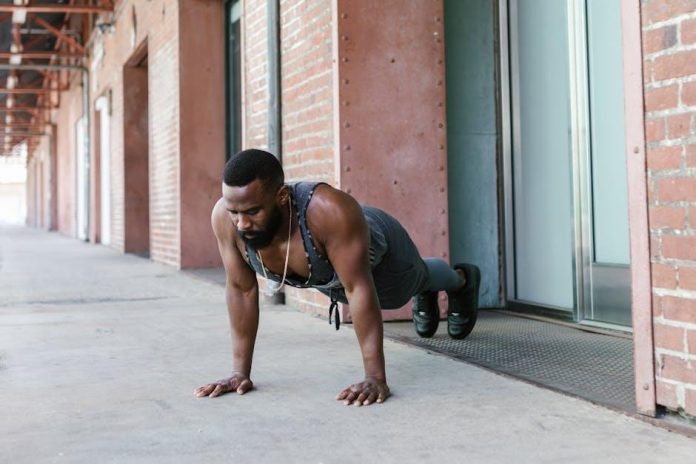Creating an effective full-body workout routine can be a game-changer for your fitness journey. Whether you’re a seasoned athlete or a beginner looking to improve your health, understanding how to design a regimen that fits your unique needs is crucial. In this article, we will guide you through the essential steps to build a full-body workout routine that not only aligns with your fitness goals but also adapts to your lifestyle. From selecting the right exercises to balancing intensity and recovery, our authoritative insights will equip you with the knowledge to craft a personalized workout plan that delivers results. Let’s dive into the fundamentals of constructing a full-body workout routine that truly works for you.
Assess Your Fitness Level and Set Clear Goals
Before diving into any workout routine, it’s essential to understand your current fitness level. This will help you tailor a plan that is both challenging and achievable. Start by evaluating the following:
- Cardiovascular Endurance: How long can you sustain aerobic exercises like running or cycling?
- Strength: Assess your ability to lift weights or perform bodyweight exercises like push-ups and squats.
- Flexibility: Can you touch your toes? How flexible are your joints and muscles?
- Balance and Coordination: Test your stability with exercises like standing on one leg or performing lunges.
Once you’ve gauged your fitness level, set clear, realistic goals. Consider using the SMART criteria—Specific, Measurable, Achievable, Relevant, and Time-bound. For example:
- Specific: “I want to increase my bench press weight.”
- Measurable: “I aim to lift 20 pounds more in three months.”
- Achievable: “I’ll increase my weight gradually each week.”
- Relevant: “Improving my strength will enhance my overall fitness.”
- Time-bound: “I will achieve this by the end of the quarter.”
By accurately assessing your fitness level and setting clear goals, you lay a strong foundation for a workout routine that is both effective and sustainable.

Choose the Right Exercises for Balanced Muscle Development
When aiming for balanced muscle development, it’s crucial to incorporate a variety of exercises that target different muscle groups. This approach not only ensures overall strength but also prevents muscle imbalances that could lead to injury. Here are some key principles to consider:
- Compound Movements: Exercises like squats, deadlifts, bench presses, and pull-ups engage multiple muscle groups simultaneously, making them essential for a well-rounded routine.
- Isolation Exercises: To target specific muscles, include exercises such as bicep curls, tricep extensions, and leg curls. These help in fine-tuning and strengthening individual muscle groups.
- Balance Push and Pull: Ensure your workout includes both pushing movements (e.g., push-ups, shoulder presses) and pulling movements (e.g., rows, lat pull-downs) to maintain muscular equilibrium.
- Include Functional Movements: Incorporate exercises that mimic everyday activities, such as lunges, kettlebell swings, and farmer’s walks, to improve functional strength and coordination.
- Core Strengthening: Don’t neglect your core. Planks, Russian twists, and leg raises are vital for stabilizing your body during other exercises and daily activities.
Remember, the goal is to create a balanced workout routine that not only builds muscle but also enhances overall fitness and prevents injuries. Customize your exercise selection based on your fitness level, goals, and any existing physical limitations.
Design a Weekly Schedule That Fits Your Lifestyle
Creating a weekly schedule tailored to your lifestyle is essential for maintaining consistency and maximizing your workout results. Start by evaluating your current commitments and available time slots. Consider the following steps to craft a schedule that seamlessly integrates with your daily routine:
- Assess Your Availability: Identify the days and times you can dedicate to working out without causing undue stress or conflicts.
- Set Realistic Goals: Determine what you want to achieve with your workouts, whether it’s building strength, increasing endurance, or improving flexibility.
- Balance Your Routine: Ensure your schedule includes a mix of cardio, strength training, and flexibility exercises. This balance helps prevent burnout and overuse injuries.
- Allow for Rest Days: Incorporate at least one or two rest days each week to give your body time to recover and rebuild muscle.
By thoughtfully planning your weekly workout schedule, you can create a sustainable routine that aligns with your lifestyle and helps you achieve your fitness goals efficiently.

Incorporate Progressive Overload for Continuous Improvement
To ensure your full-body workout routine remains effective and continues to yield results, it’s crucial to integrate the principle of progressive overload. This concept involves gradually increasing the intensity of your workouts, which can be achieved through various methods:
- Increase Weight: Gradually add more weight to your exercises. For instance, if you’re performing squats with 20 pounds, try moving up to 25 pounds after a few sessions.
- Increase Repetitions: Add more reps to your sets. If you’re comfortable with 10 reps, aim for 12-15 reps over time.
- Increase Sets: Adding additional sets to your routine can help push your muscles to new limits.
- Decrease Rest Time: Shortening the rest period between sets can intensify your workout and boost endurance.
By consistently challenging your muscles and avoiding stagnation, you promote muscle growth, strength gains, and overall fitness improvement. Remember to listen to your body and make adjustments as needed to prevent overtraining and injury.





